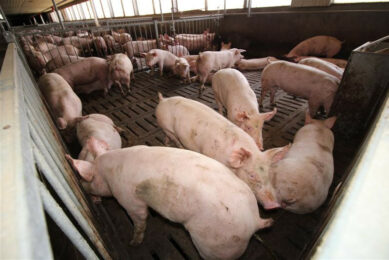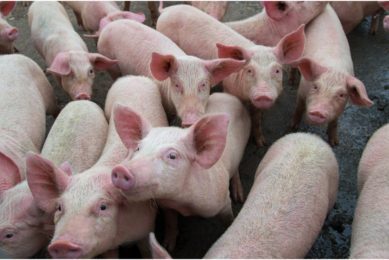Feed efficiency is about accurate estimates

An accurate feed formulation is essential for optimising feed efficiency and minimizing feed cost for swine and poultry production, states the University of Purdue in the US.
The researchers made a review that provides information on the methodology used to determine accurate estimates of AA and energy availability for formulating swine and poultry diets.
Careful selection
An accurate diet formulation is important because energy and amino acid (AA) account for the major cost of swine and poultry diets, a precise determination of the availability of energy and AA in feedstuffs is essential for accurate diet formulations. Therefore, the methodology for determining the availability of energy and AA should be carefully selected. The total collection and index methods are 2 major procedures for estimating the availability of energy and AA in feedstuffs for swine and poultry diets. The total collection method is based on the laborious production of quantitative records of feed intake and output, whereas the index method can avoid the laborious work, but greatly relies on accurate chemical analysis of index compound. The direct method, in which the test feedstuff in a diet is the sole source of the component of interest, is widely used to determine the digestibility of nutritional components in feedstuffs. In some cases, however, it may be necessary to formulate a basal diet and a test diet in which a portion of the basal diet is replaced by the feed ingredient to be tested because of poor palatability and low level of the interested component in the test ingredients.
Digestibility estimates
For the digestibility of AA, due to the confounding effect on AA composition of protein in faeces by microorganisms in the hind gut, ileal digestibility rather than fecal digestibility has been preferred as the reliable method for estimating AA digestibility. Depending on the contribution of ileal endogenous AA losses in the ileal digestibility calculation, ileal digestibility estimates can be expressed as apparent, standardized, and true ileal digestibility, and are usually determined using the ileal cannulation method for pigs and the slaughter method for poultry. Among these digestibility estimates, the standardized ileal AA digestibility that corrects apparent ileal digestibility for basal endogenous AA losses, provides appropriate information for the formulation of swine and poultry diets.
Energy in feedstuffs
The total quantity of energy in feedstuffs can be partitioned into different components including gross energy (GE), digestible energy (DE), metabolizable energy (ME), and net energy based on the consideration of sequential energy losses during digestion and metabolism from GE in feeds. For swine, the total collection method is suggested for determining DE and ME in feedstuffs whereas for poultry the classical ME assay and the precision-fed method are applicable. Further investigation for the utilization of ME may be conducted by measuring either heat production or energy retention using indirect calorimetry or comparative slaughter method, respectively.
The full review can be read in the Asian Australasian Journal of Animal Science.











